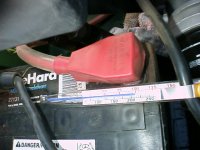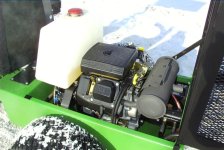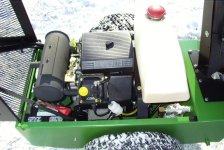marrt
Platinum Member
OK. The verdict is in. I finally had a chance to mow today and the temperature around the battery hit almost 225 degrees after one hour! And that’s with an ambient air temp of about 75 degrees. By the time I grabbed my camera, the temp had already dropped to about 212 degrees on the thermometer. The thermometer, as you can see in the attached pic, basically measures the air temperature around the battery, and therefore falls fast when the engine is idling. I have no idea what the actual battery temperature was but can guess it will get really high if bathed in 225 degree air for several hours.
I leave this thermometer in all the time now and will continue to measure as the summer gets hot. One thing’s for sure…I think 225 degrees is too hot for a battery.
I leave this thermometer in all the time now and will continue to measure as the summer gets hot. One thing’s for sure…I think 225 degrees is too hot for a battery.


